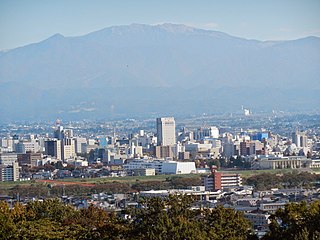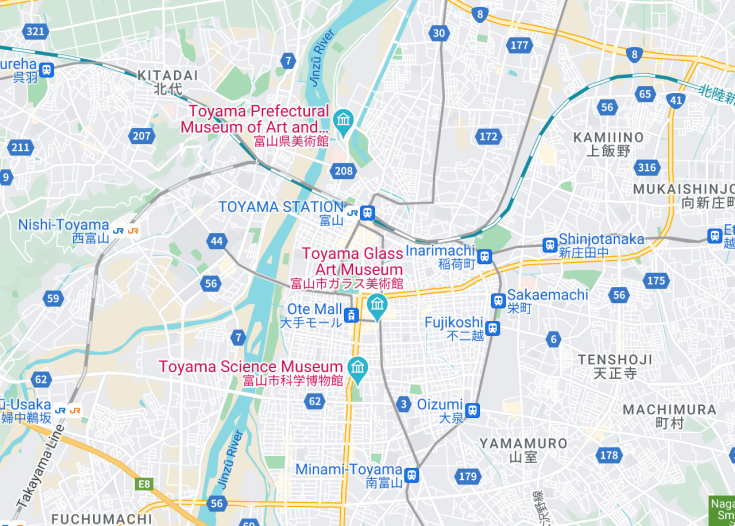Toyama, a hidden gem nestled between the Japan Sea and the Northern Alps, offers a unique blend of scenic beauty and cultural heritage. Known for its breathtaking landscapes, Toyama features pristine mountain environments and crystalline rivers. Visitors can explore historic castles, traditional crafts, and fresh seafood markets that underscore Toyama’s rich heritage and connection to nature. This destination is ideal for those seeking tranquility, natural beauty, and a glimpse into Japan’s historical lifestyle.
Before traveling to Toyama, consider visiting during the fall to experience the spectacular autumn foliage, creating a stunning backdrop for hiking and outdoor activities.
Do not miss a tranquil boat ride on the Tateyama Kurobe Alpine Route, offering unforgettable views of the surrounding mountains and valleys.
Top things to do & see in Toyama
Select the following sights and activities to discover best tickets and tours available in Toyama.
Toyama: Gateway to Natural Wonders
| Country | Japan |
| Time in Toyama | GMT+9 |
| Language spoken | Japanese |
| Population | 416,763 (source: Japan Statistical Office) |
| Currency | Japanese Yen (¥, JPY) |
| Airports | Toyama Airport (5 mi / 8 km). |
Toyama, located in the northwestern part of Japan’s Honshu island, is a prefecture known for its diverse range of attractions that cater to both nature lovers and cultural aficionados. Toyama’s charm lies mainly in its rich history, culture, and stunning natural scenery. It’s surrounded by the Tateyama Mountain Range, part of the Northern Japan Alps, offering breathtaking views and a natural playground for trekkers and outdoor enthusiasts.
The region is historically significant, with origins tracing back to the prehistoric era, and it played a crucial role during the Edo period as a hub of pharmaceutical knowledge. Today, Toyama leverages its historical heritage combined with modern innovation in medicine and technology, earning a reputation as a leader in the pharmaceutical industry.
Toyama is also known for its exquisite culinary scene, particularly seafood, thanks to its proximity to the rich waters of the Sea of Japan. The prefecture is famous for its firefly squids, Toyama Bay shrimp, and premium-quality sake, brewed from the pristine waters of the melted snow from the Alps.
Visitors to Toyama can explore attractions like the Toyama Castle, which dates back to the 16th century, and the enchanting Kurobe Gorge – a remote ravine that offers some of Japan’s most spectacular wilderness areas. During the spring, the Kurobe Dam, Japan’s tallest dam, discharges water in a dramatic display that attracts visitors from across the globe.
For those interested in a unique cultural experience, the Gokayama area, a UNESCO World Heritage Site, features historic gassho-style houses that are over 250 years old. These traditional farmhouses with their steeply pitched thatched roofs are a sight to behold and provide insight into the architectural ingenuity adapted to heavy snowfall conditions.
With its blend of natural beauty, history, and modern culture, Toyama offers a fulfilling travel experience that is both enriching and captivating.
Where is Toyama?
Toyama is situated on the coast of the Sea of Japan in the Chubu Region of Honshu, Japan’s main island.
Distances:
| Route | Distance by car | Time by car |
|---|---|---|
| Tokyo to Toyama | 204 miles / 329 km | Approx. 4 hours |
| Osaka to Toyama | 205 miles / 330 km | Approx. 4 hours |
What is Toyama famous for?
Toyama is renowned for its scenic landscapes including the Tateyama Mountain Range, rich historical culture, and exquisite traditional seafood cuisine, making it a unique destination in Japan.
History
Prehistoric to Feudal Japan (Before 1600s)
Toyama’s history begins long before written records, with evidence suggesting settlements during Japan’s Jomon period. Due to its strategic location and natural resources, the area developed significantly over the centuries. During the feudal era, Toyama was known as Etchu Province, controlled by various local clans through the Sengoku period, a time marked by military conflict and social upheaval.
Edo Period (1603-1868)
Under the Tokugawa shogunate in the Edo period, Toyama flourished as part of the Kaga Domain, governed by the powerful Maeda clan. This era brought relative peace, and Toyama became a center of medicine and education, helping to cultivate a cultured and prosperous society.
Modernization and War (1868-1945)
With the Meiji Restoration in 1868, Toyama embraced rapid modernization. Industrial facilities, like textiles, and advanced educational institutions were established. However, WWII brought severe devastation to Toyama due to its industrial significance, suffering extensive air raids which almost obliterated its urban areas.
Post-War Reconstruction to Present (1945-Present)
Post-war, Toyama underwent dramatic reconstruction, emerging as a model of urban development and environmental management. Today, Toyama is recognized for its innovative approaches to sustainable living and public transportation, often cited as a global example in urban planning conferences.
Visit Toyama
What to see and do in Toyama
Explore the rich heritage and natural beauty of Toyama. Key attractions include:
- The historic Toyama Castle, which offers insights into the region’s feudal past and beautiful gardens.
- Kurobe Gorge, a breathtaking natural wonder ideal for scenic railway trips and hiking.
- Shogawa River Cruise, providing picturesque views of traditional thatched-roof houses and cherry blossoms in spring.
- The Museum of Modern Art, Toyama, showcasing contemporary artistic expressions alongside traditional Japanese art.
Festivals and Events in Toyama
Toyama hosts several cultural events throughout the year, celebrating its unique heritage and community spirit. Key events include:
- Yotaka Andon festival in June, featuring large lantern floats and energetic night parades.
- Firefly Squid Festival in spring, celebrating the annual arrival of the glowing creatures on the Toyama Bay shores.
- Owara Kaze no Bon in September, an elegant dance festival that captivates many with its folk music and traditional attire.
Best time to visit Toyama
The ideal time to visit Toyama is during the spring and fall months. Spring (March to May) offers the spectacular sight of cherry blossoms, while fall (September to November) showcases the brilliant autumn colors. Additionally, these periods feature milder weather, making it comfortable for touring and participating in outdoor activities.
Is Toyama worth visiting?
Toyama is undoubtedly worth visiting for its unique blend of cultural heritage, stunning natural landscapes, and forward-thinking urban development. The region offers a variety of experiences that cater to both history enthusiasts and nature lovers. From its historical sites and museums to the breathtaking scenery of the Japanese Alps, Toyama provides a distinctive and enriching travel experience that contrasts the hustle of Japan’s mega-cities.









